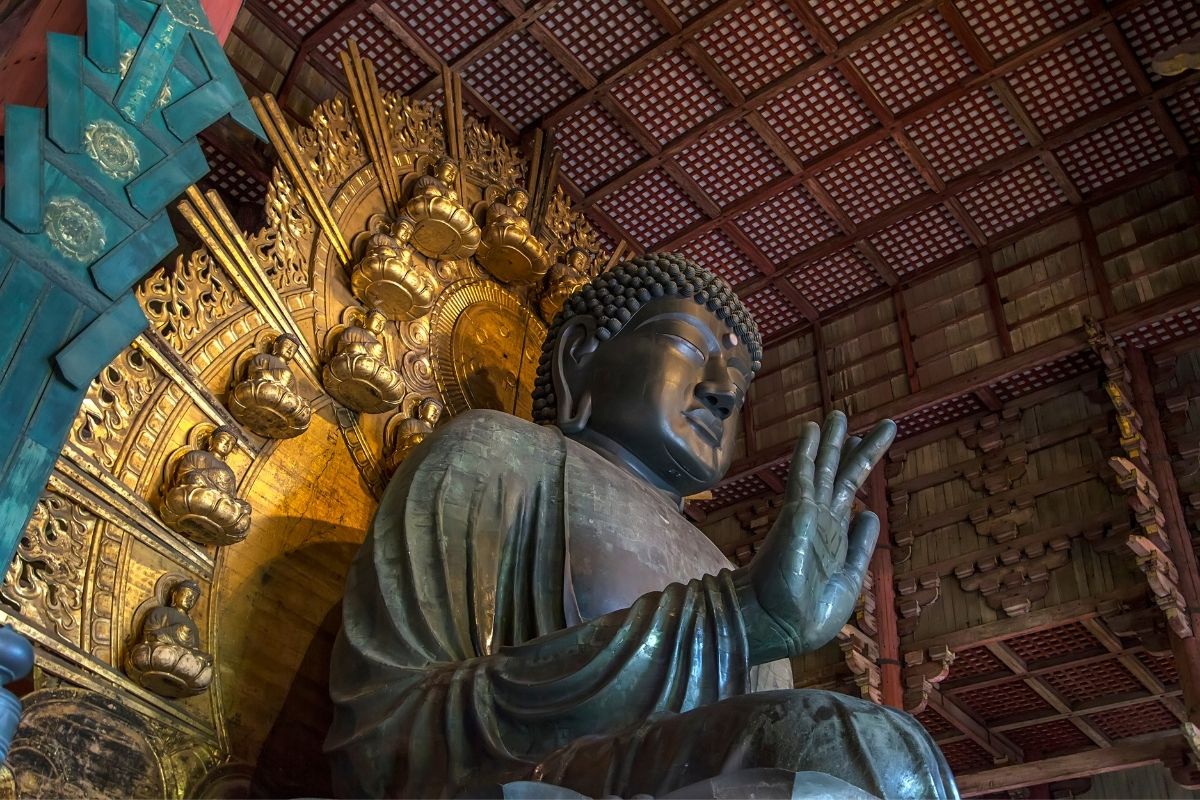Hiroshima Peace Memorial Museum
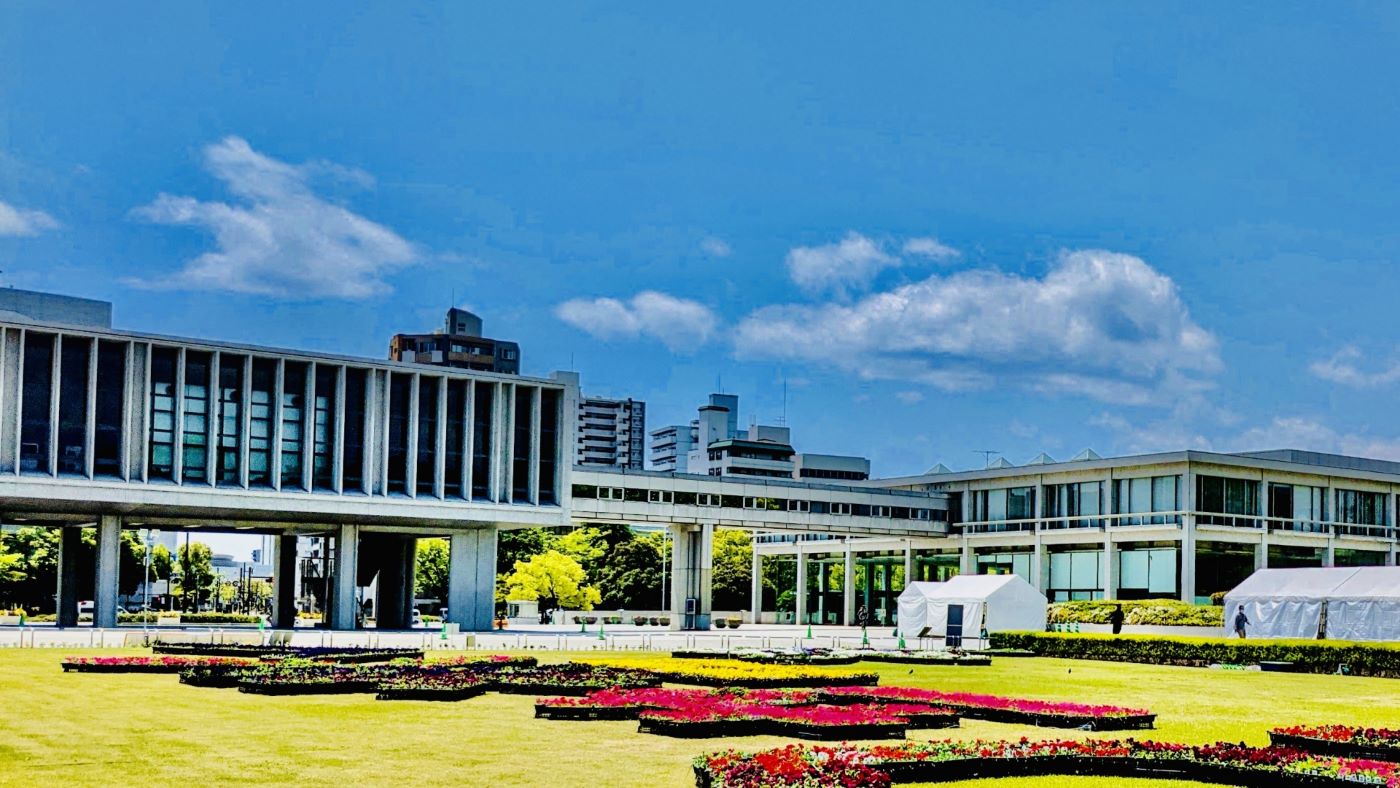
The Hiroshima Peace Memorial Museum is a facility that examines the damage caused by the atomic bombing from various angles and encourages visitors to think deeply about it. Many artifacts and documents of the atomic bombing are on display. Currently, only the East Wing can be visited, but materials from the Main Wing, which is closed, are on temporary display.
Address: 1-2 Nakajima-cho, Naka-ku, Hiroshima
Access: 16 min. from JR Hiroshima Stn. on the Hiroshima Dentetsu Hiroden Line bound for Miyajima-guchi, 10 min. walk from Atomic Bomb Dome-mae stop.
Atomic Bomb Dome
A World Cultural Heritage Site that conveys the ravages of war to future generations

On August 6, 1945, an atomic bomb was dropped on the city of Hiroshima. The Hiroshima Prefectural Products Exhibition Hall, completed in 1915, was located approximately 160 meters northwest of the hypocenter.
The building was severely damaged by the blast and heat rays, and the ceiling was completely destroyed by fire. Miraculously, the central part of the bookstore was spared from collapse, and the top of the wreckage was shaped like a circular steel cap, hence the name “Atomic Bomb Dome”.
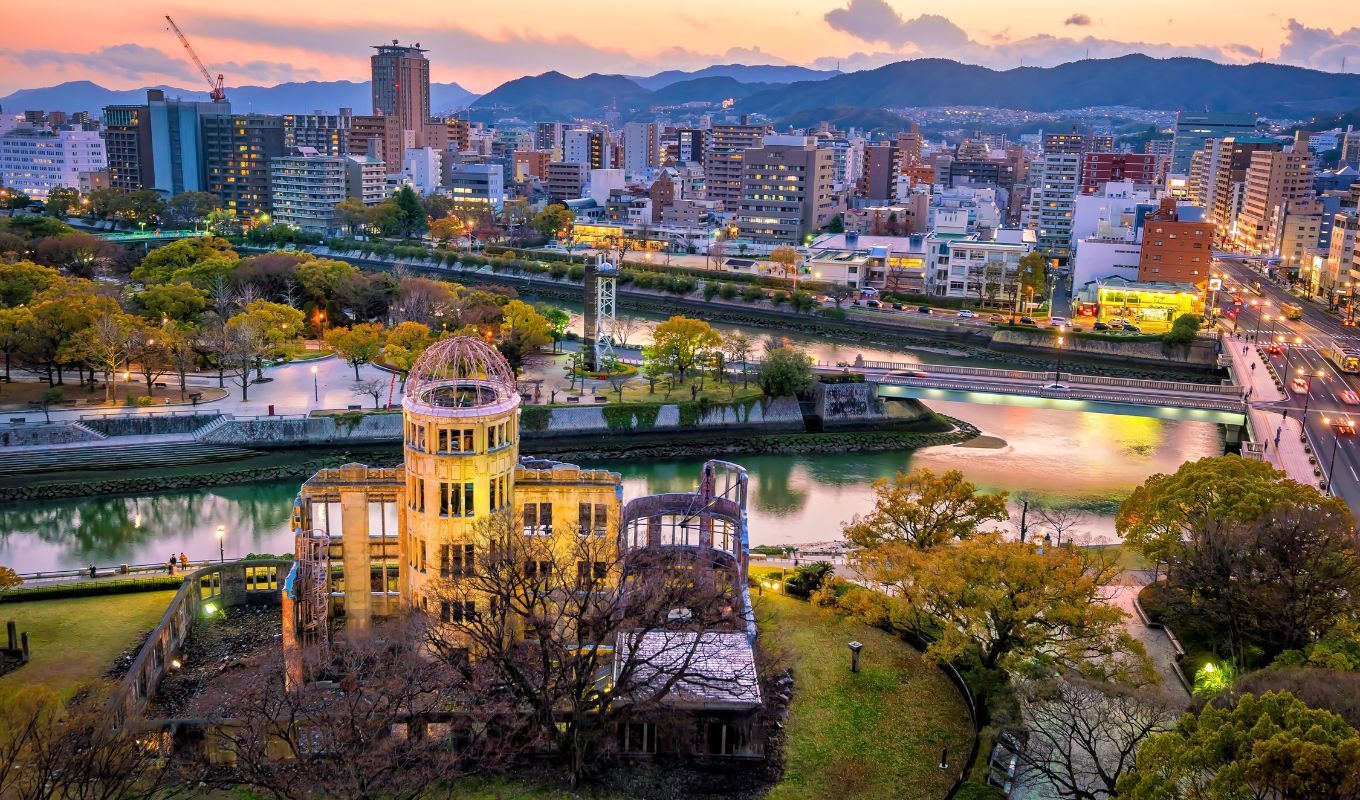
The building is registered as a World Cultural Heritage site as a symbol that conveys to future generations the horrors of war and the atomic bombing and appeals to the world for the abolition of nuclear weapons and the importance of lasting peace.
Note: Only the exterior of the dome is open to the public.
Address: 1-10 Otemachi, Naka-ku, Hiroshima City, Hiroshima Prefecture
Closed No holidays
Admission Free
Peace Memorial Park
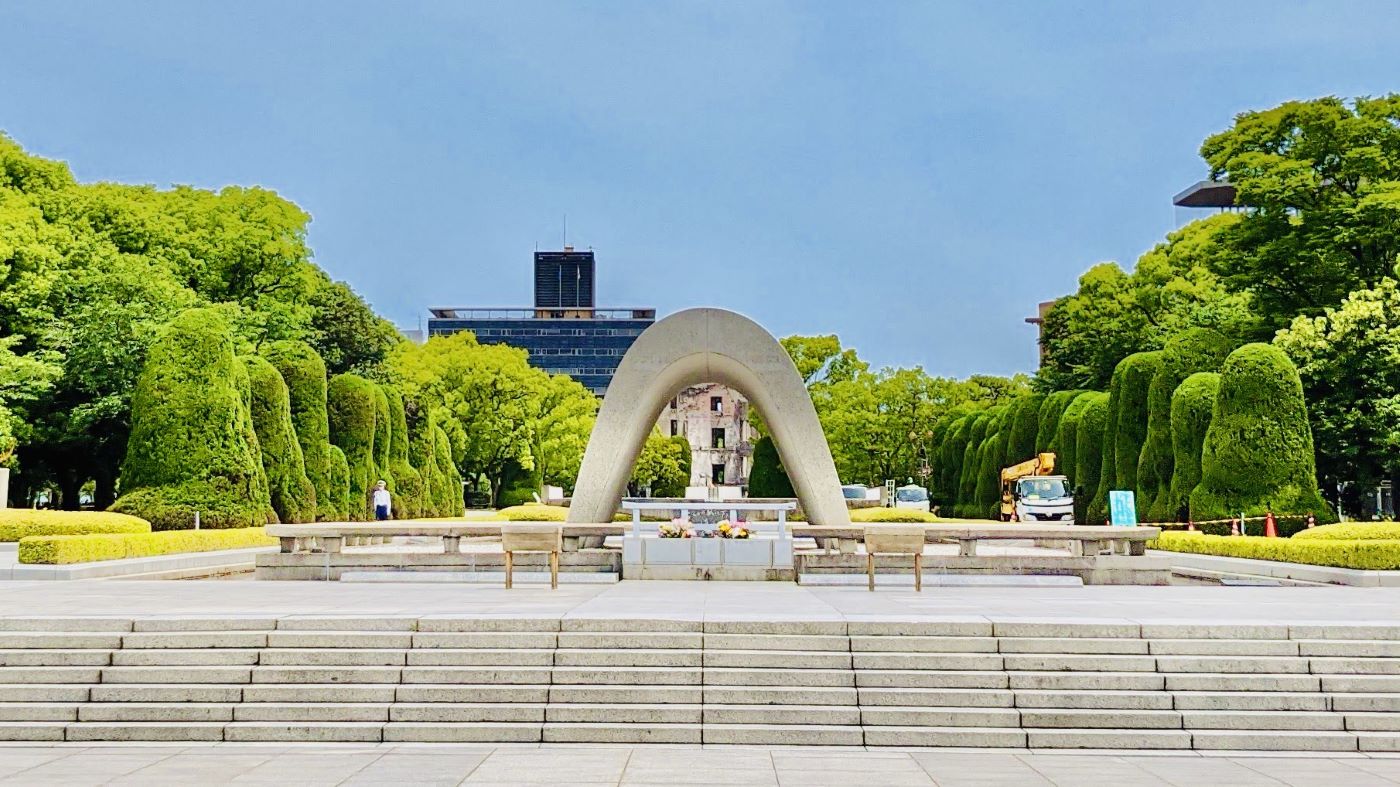
The Peace Memorial Park was established to commemorate the victims of the atomic bombing and includes facilities such as Hiroshima Peace Memorial Museum, Hiroshima National Peace Memorial Hall for the Atomic Bomb Victims, and the Atomic Bomb Dome.
On August 15, the day the war ended, many people gather here, and many of them may have seen the dome on TV broadcasts.
The park is beautifully maintained and lushly green, and in January, the Hiroshima Marathon is held there, making it a very lively place to visit.
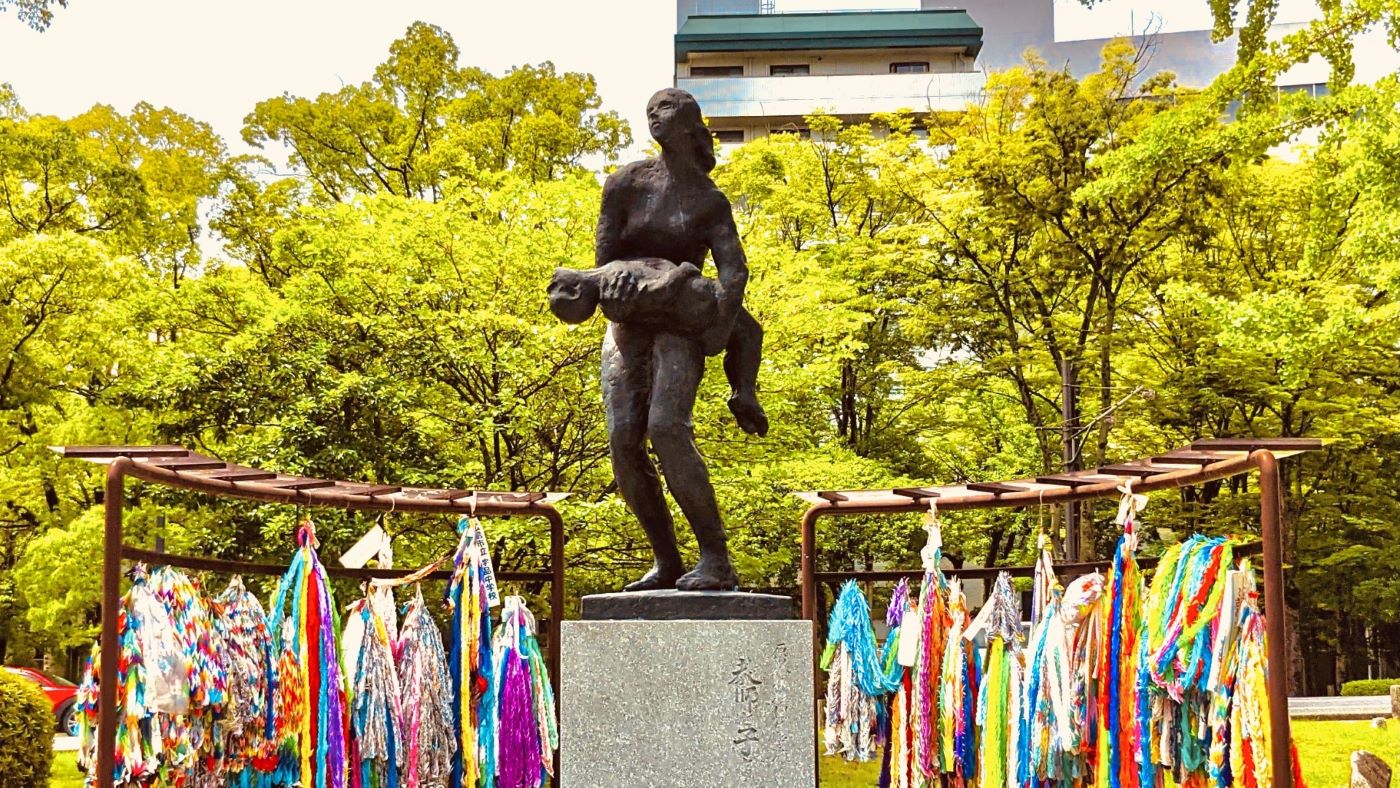
The park is a popular tourist destination for both men and women, and there are many things to see, such as 1,000 paper cranes and statues praying for peace.
Whenever you visit, you will always see tourists and locals, which shows how important this place is. It is very crowded during the school excursion season, so it is better to adjust the time of your visit.
It is a good place to take a leisurely stroll and feel the history and think about the war. It is a place that makes you think that we should live our lives to the fullest with a sense of gratitude for the fact that we are able to live happily.
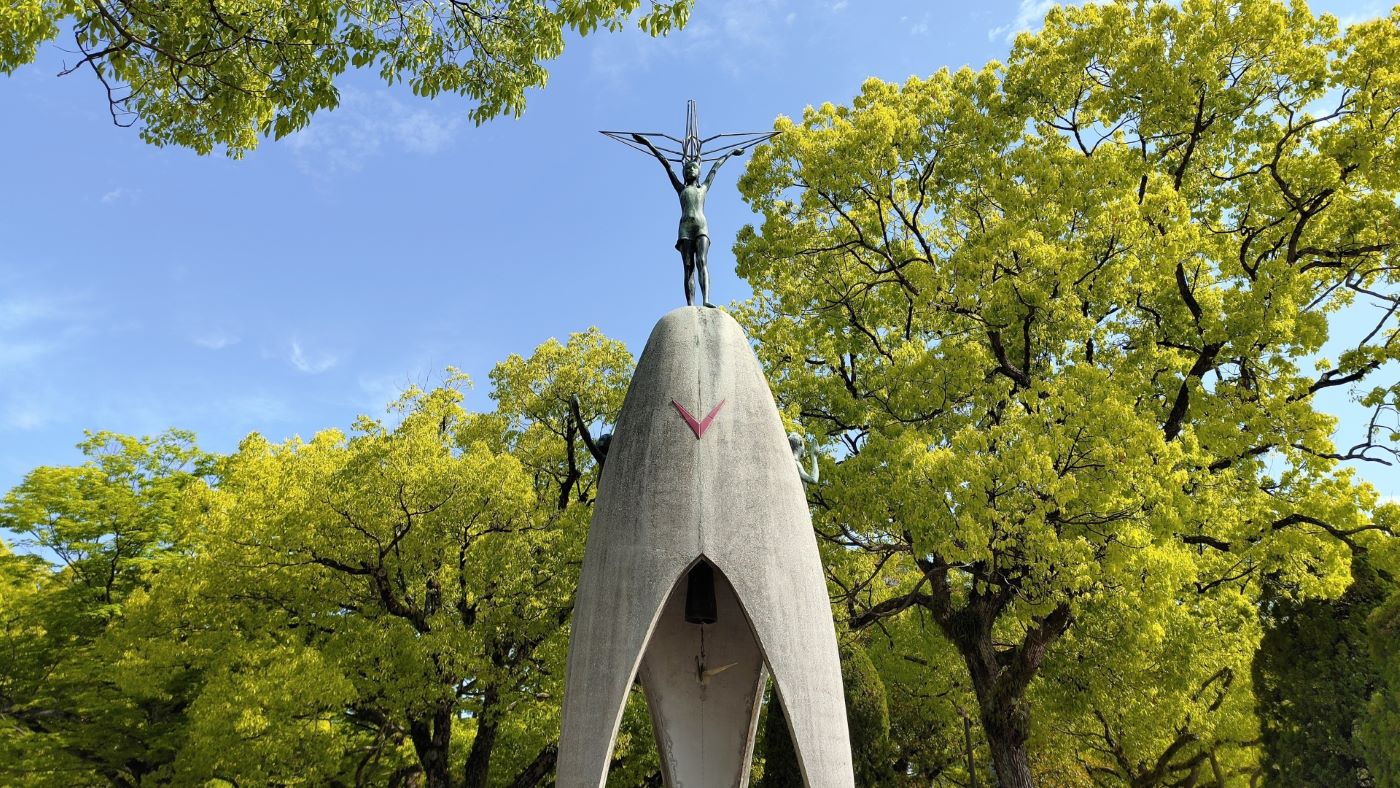
Hiroshima Peace Memorial Museum and Hiroshima Peace Memorial Museum are very close to each other, so I would like you to visit both of them. Volunteers are always on hand to guide visitors around the museum.
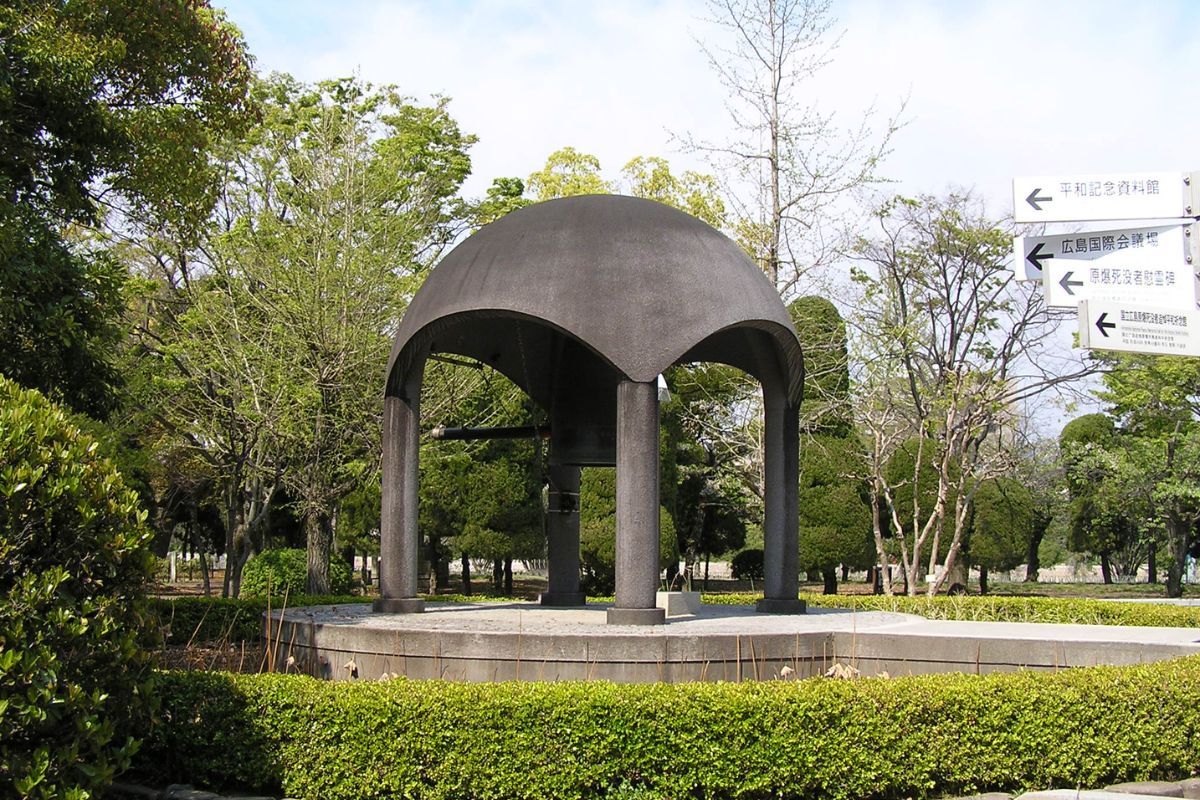
Address: 1 Nakajimacho 1 and 1-10 Otemachi, Naka-ku, Hiroshima City, Hiroshima Prefecture
Website: https://hpmmuseum.jp/?lang=eng
Shukkeien Garden
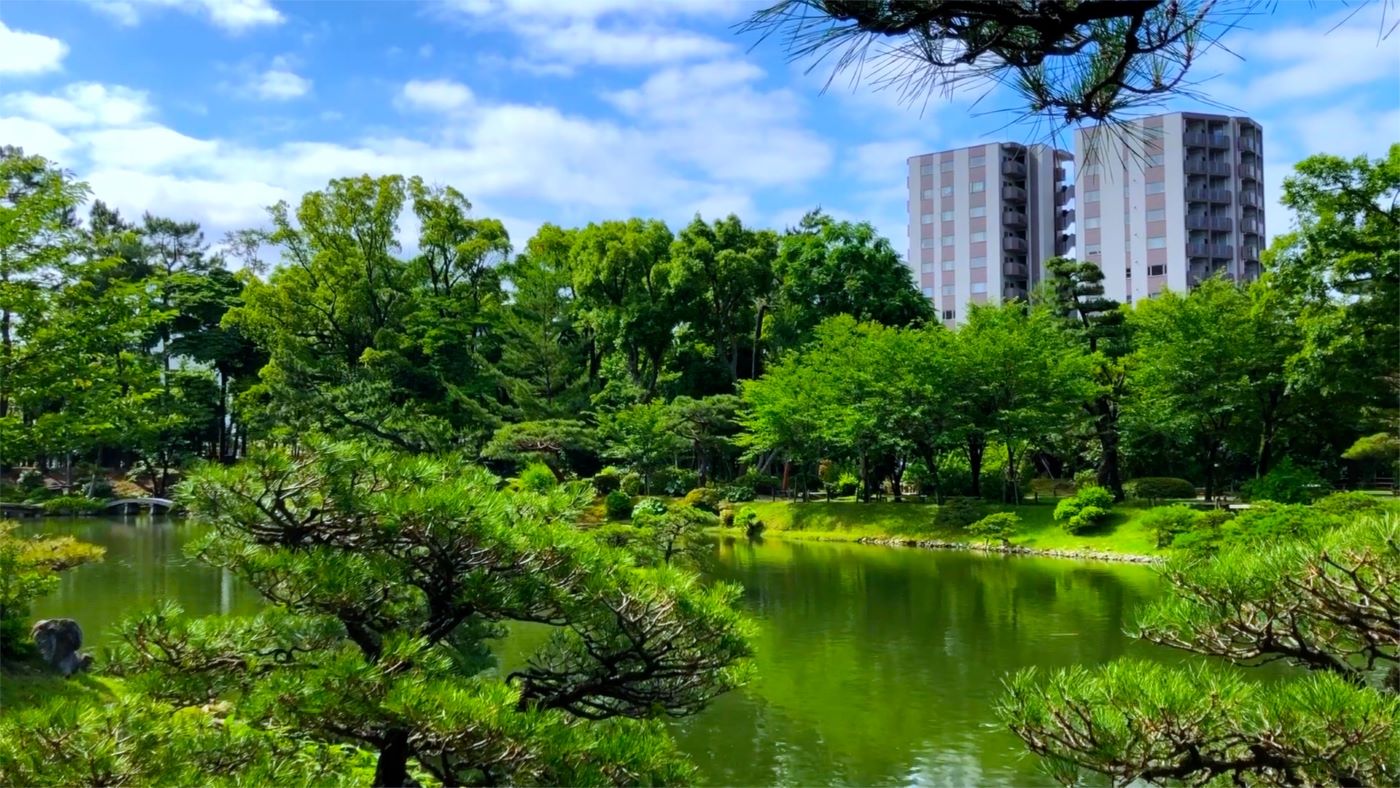
The garden was created in 1620 by Nagaaki Asano, the feudal lord of Hiroshima, as his villa. The garden was designed by Muneyoshi Ueda, a retainer and well-known tea master.
It is said that Shukkeien was modeled after the world-famous West Lake in China, and a beautiful world view is spread throughout the garden.
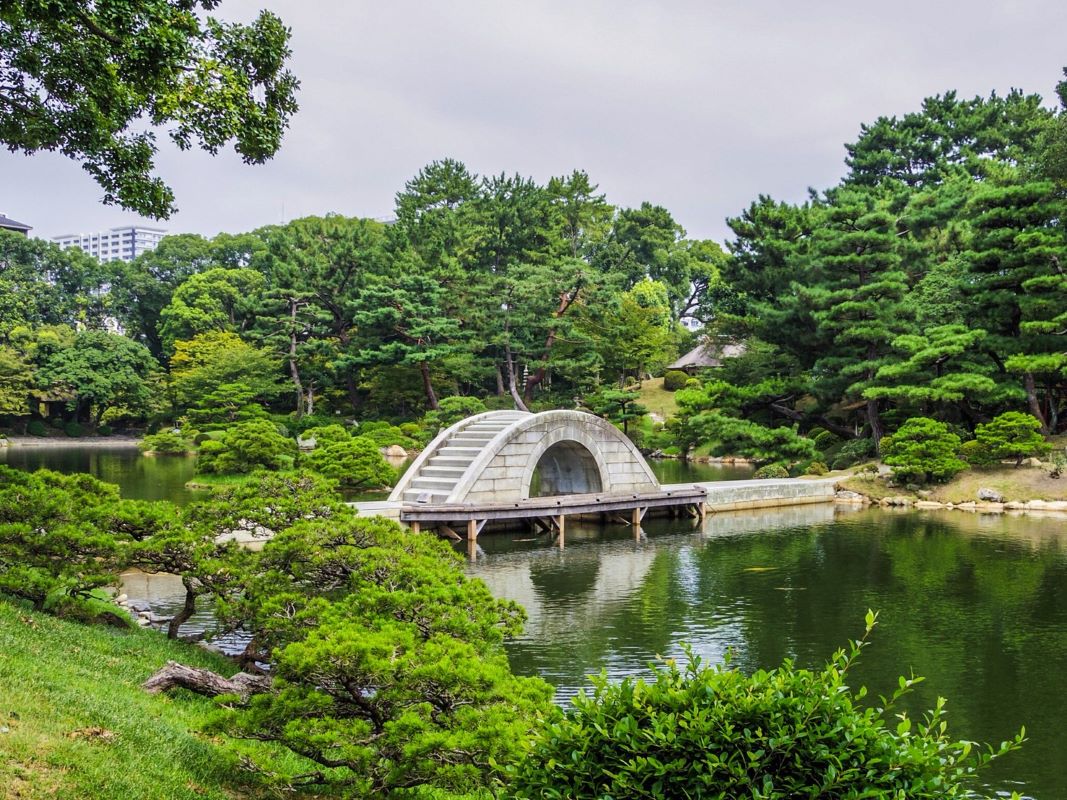
The garden is a kaiyu-style garden, as visitors can enjoy the garden no matter where they look. Visitors are encouraged to take their time while strolling and admiring the scenery around the lake.
In 1940, the garden was recognized as a national place of scenic beauty (a place of scenic beauty), but it was temporarily destroyed by the atomic bomb in 1945. However, the Hiroshima Prefectural Board of Education has been working on reconstruction and improvement, and the beautiful garden can still be seen today.

It is a sightseeing spot that is within walking distance from Hiroshima Station, the center of Hiroshima, so it is a good place to go for a walk.
Hiroshima Castle
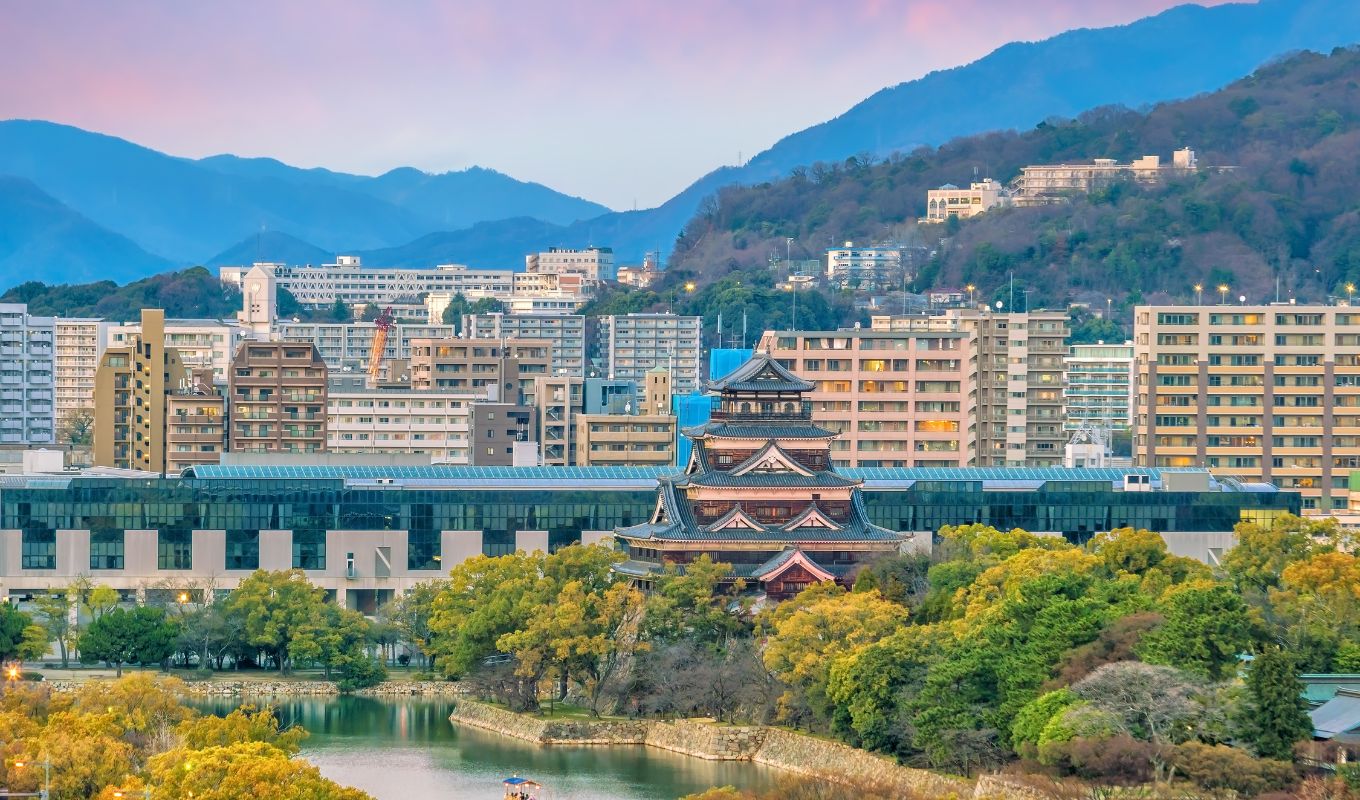
Hiroshima Castle was built in 1589 by Terumoto Mori, and is a contoured flattened castle. Along with Nagoya Castle and Okayama Castle, Hiroshima Castle is one of the three largest flat castles in Japan, and is designated as one of the 100 best castles in Japan.
Enjoy Panoramic Views Of Hiroshima At Orizuru Tower
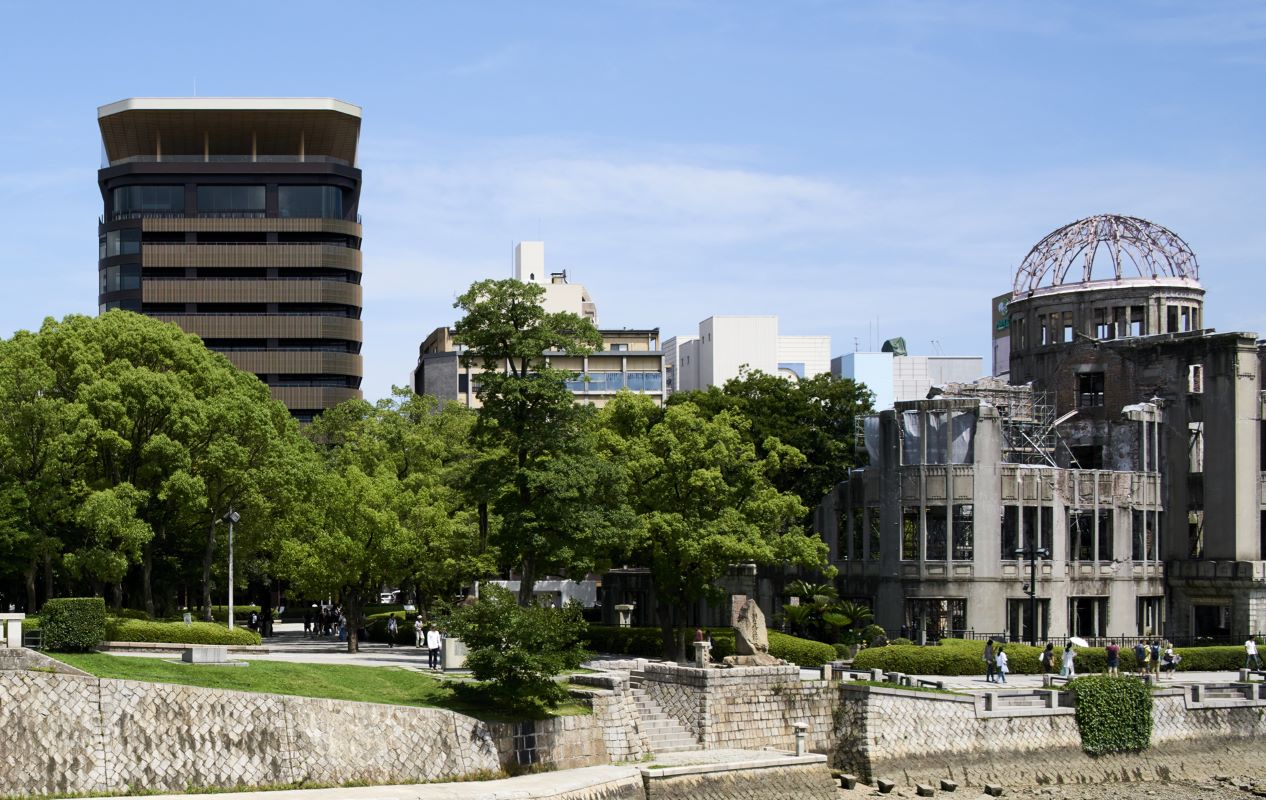
Located east of the Atomic Bomb Dome, this sightseeing facility has 13 stories above ground and two below.
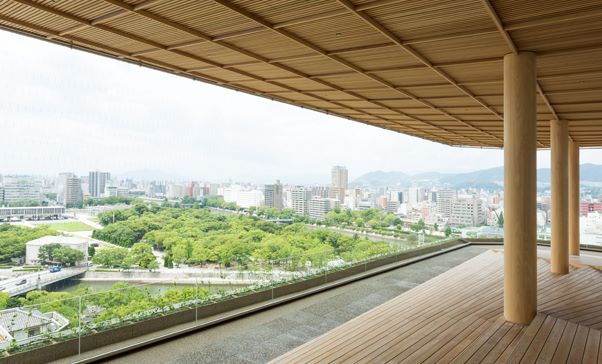
On the top floor, there is an observation space offering a panoramic view of the city, and on the first floor, there are stores and restaurants selling Hiroshima’s famous products.
Address: 1-2-1 Otemachi, Naka-ku, Hiroshima
Access: It’s right next to the A-bomb dome
Okonomimura
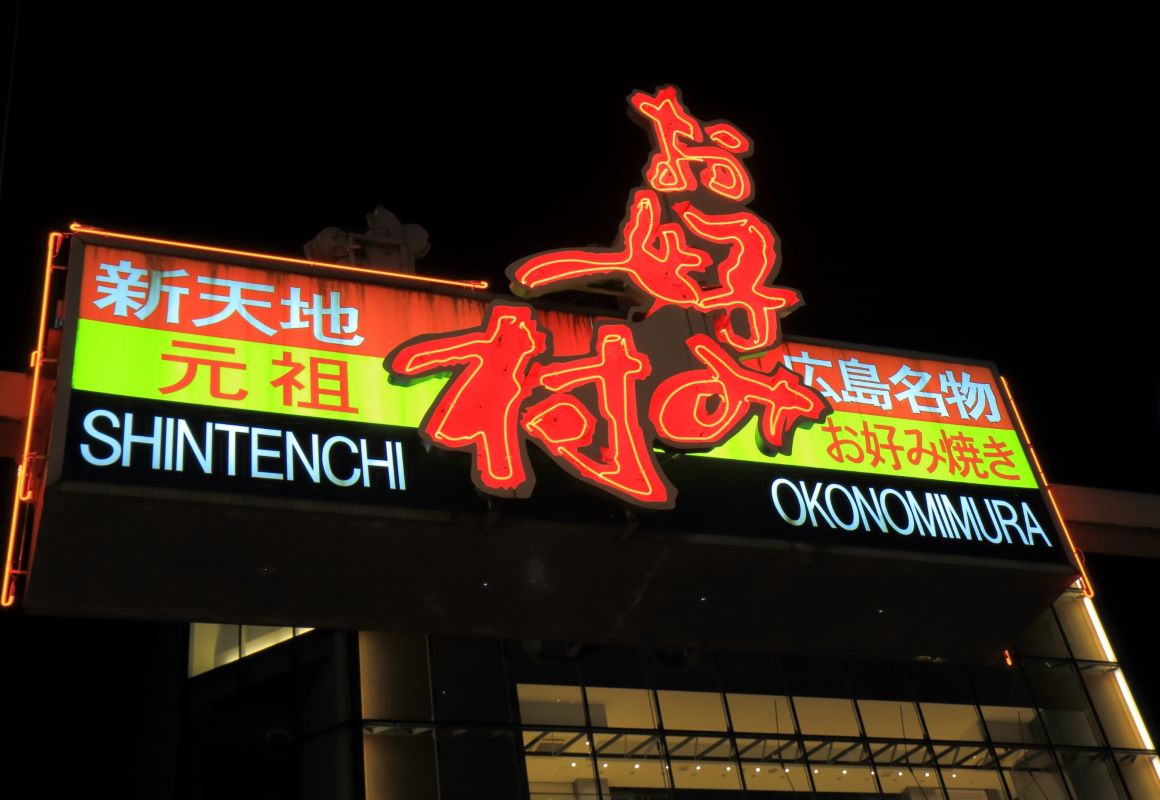
Okonomimura, where Hiroshima’s famous okonomiyaki restaurants are gathered, was built in the center of Hiroshima City, which was trying to rebuild after World War II.
Unlike Osaka-style okonomiyaki, Hiroshima-style okonomiyaki is characterized by its crepe-like thin dough topped with vegetables and bacon like a hamburger.
Okonomimura consists of a total of 24 stalls on the 2nd through 4th floors of the building, and you can fully enjoy the atmosphere of Hiroshima as it was in the olden days, with its original flavor and liveliness still intact.
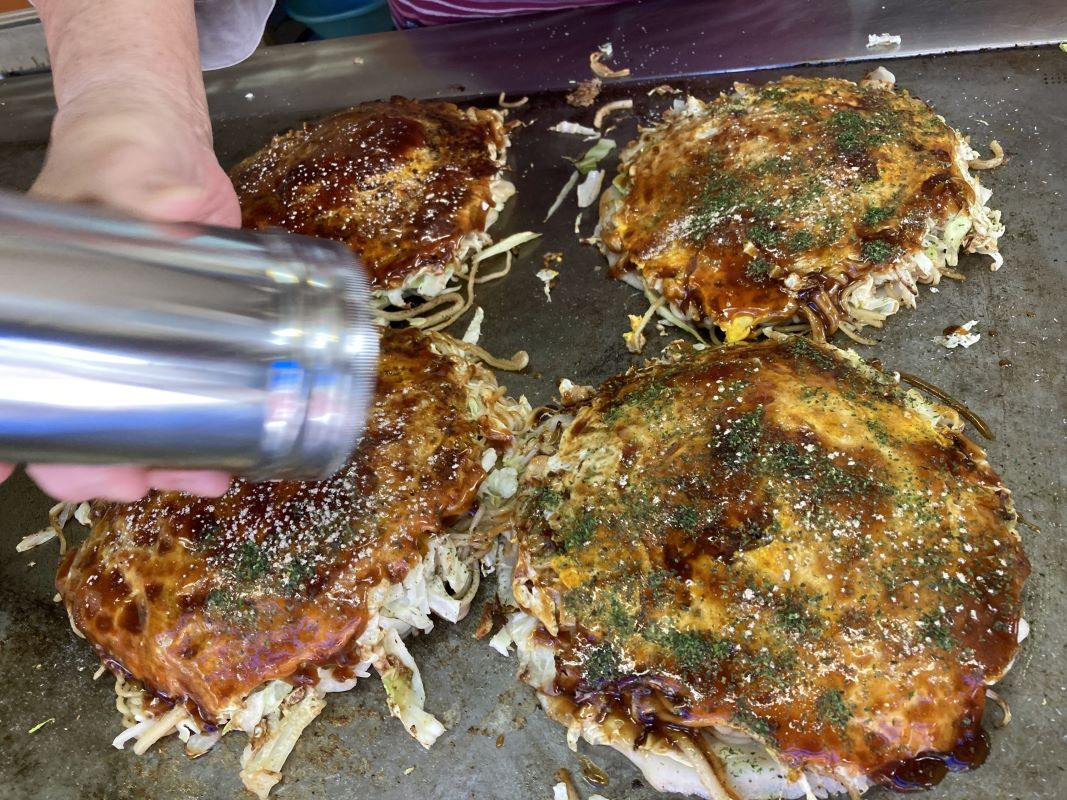
The village also has okonomiyaki sauce specially made for “Okonomimura,” and the attraction is that everyone can enjoy spending time together around one large griddle.
Why don’t you enjoy the traditional Hiroshima okonomiyaki by walking around to try various restaurants?
Address: 5-13 Shintenchi, Naka-ku, Hiroshima City, Hiroshima Prefecture, 730-0034
Access: From Hiroshima Station Take the streetcar and get off at the “Hacchobori” stop. It’s a 3-minute walk from there.
Mitaki Temple

This is a temple of the Koyasan Shingon sect located in the Mitakiyama district of Nishi Ward. It is located about 4 km away from Peace Memorial Park, making it a relatively secluded spot.
Because it is a sacred site lined with old Buddhist statues, it has recently been attracting many foreign tourists.
Highlights include the vermilion-colored Daboto (pagoda), which is an important cultural property, Komagataki Waterfall, Bonon Waterfall, and Yumei Waterfall, as well as the autumn leaves (October to November).

Many people describe the area, which has a different atmosphere from the city center as if it were Kyoto or Nara.
Cultural Properties of Note
- Seated wooden statue of Amida Nyorai
- Daboto Pagoda
- Seated wooden statue of Amida Nyorai
Address: 411 Mitakiyama, Nishi-ku, Hiroshima City, Hiroshima Prefecture, 733-0805
Website: http://www.city.hiroshima.lg.jp/nishi/matizukuri/miryoku-map/mitaki_hp/
Admission: Free
Opening hours: 8:00-17:30
Access: Get off at Mitaki Station on the JR Kabe Line. 15 minutes on foot from the station.
Take Hiroshima Bus No. 22 bound for Mitaki-kannon, and get off at the last stop.
Hiroshima Prefectural Art Museum
The Hiroshima Prefectural Art Museum is located in Naka-Ku of Hiroshima City and boasts a collection of over 5,000 works of art, including important cultural properties, centering on modern Western and Japanese paintings and Japanese and Asian crafts.
The museum also collects many works of art by painters associated with Hiroshima, such as Katsuzo Entsubaku and Ikuo Hirayama. Exhibitions of works from the collection are changed about four times a year, and special exhibitions and lectures on themes are also held.
The museum lobby and lounge offer a view of the adjacent Shukkeien Garden, a national scenic beauty spot.
Address: 2-22 Kaminobori-machi, Naka-ku, Hiroshima City, Hiroshima Prefecture
Hours: 9:00-17:00 (Admission until 30 minutes before closing)
Admission: Adults 510 yen, college students 310 yen, high school students and younger free (special exhibitions are extra)
Yoshimizuen Garden
Normally closed to the public, the garden is open to the public for a limited period of eight days in June and November.
Yoshimizuien was built in 1781 by Masatoshi Sasaki Hachiemon, who was inspired to build the garden after noticing the splendor of the scenery in the area.
In the spring, visitors can see the morel tree frogs, designated as a natural treasure by Hiroshima Prefecture, and in the fall, they can view the autumn leaves in the park. Both seasons are greatly worth visiting the park, so it is a good place for sightseeing and date night.
There is a villa with a tea ceremony room in the garden, which has been visited by many cultural figures and politicians.
Address: Kake, Akita-cho, Yamagata-gun, Hiroshima Prefecture
Access: 5 minutes on foot from the old Kake Station
English Website: http://yoshimizuen.com/english.html
Yamato Museum (In Nearby Kure City)
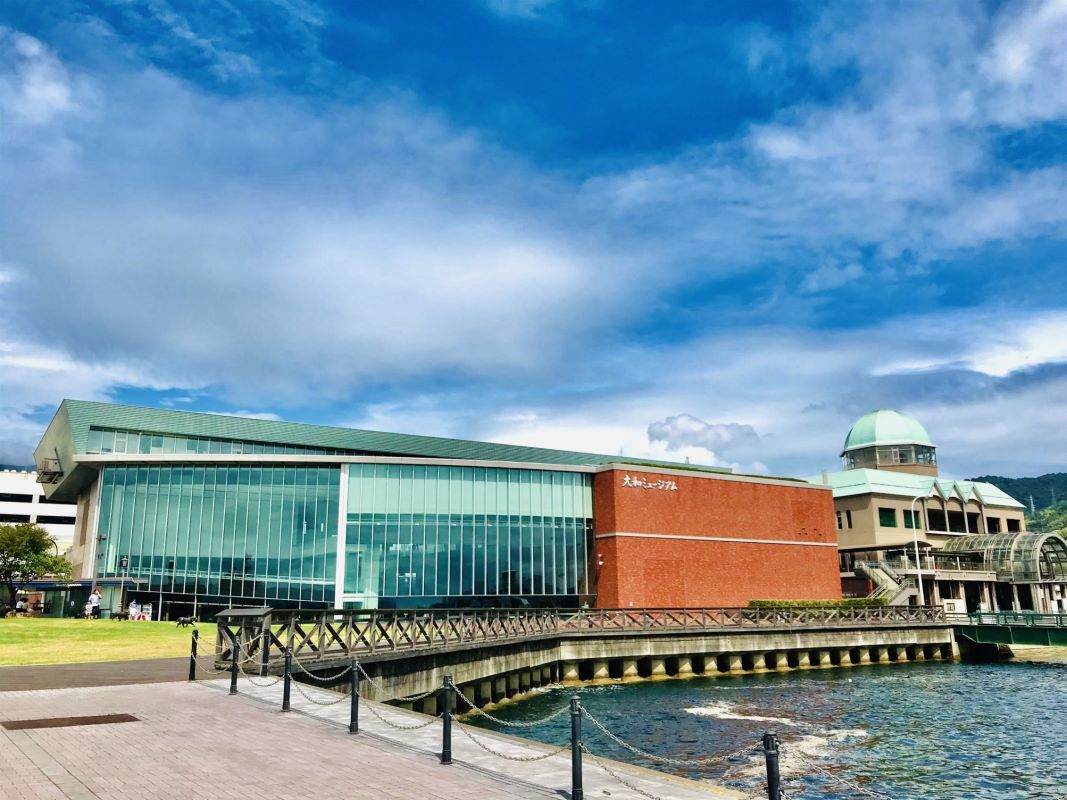
The city of Kure, where the Yamato Museum is located, was home to the former Japanese Navy’s Chinju Office and the naval arsenal where the battleship Yamato was built.
The Yamato Museum is a facility where visitors can learn about the history of Kure. The centerpiece of the museum is a one-tenth-scale model of the battleship Yamato. The scale of the model is overwhelming.
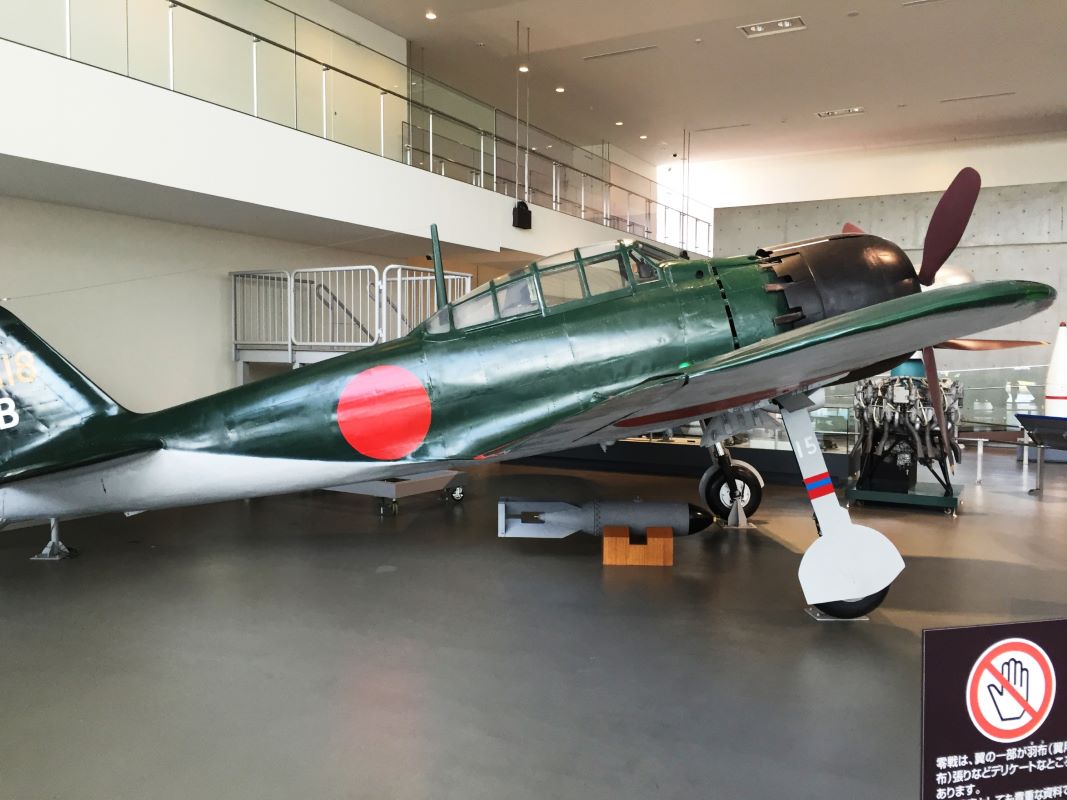
Also on display are many weapons from the Pacific War, such as the Type Zero fighter Type 62, Type 93 torpedo, and the suicide attack weapon “Kaiten. The museum store is a must-see for visitors who would like to purchase the famous Navy Curry as a souvenir.
Address: 5-20 Takaracho, Kure City, Hiroshima 737-0029, Japan
Hours: 9:00-18:00
Adults: 500 yen, High school students: 300 yen
Access: By train: 5 min. walk from “Kure Station” on the JR Kure Line from Hiroshima





